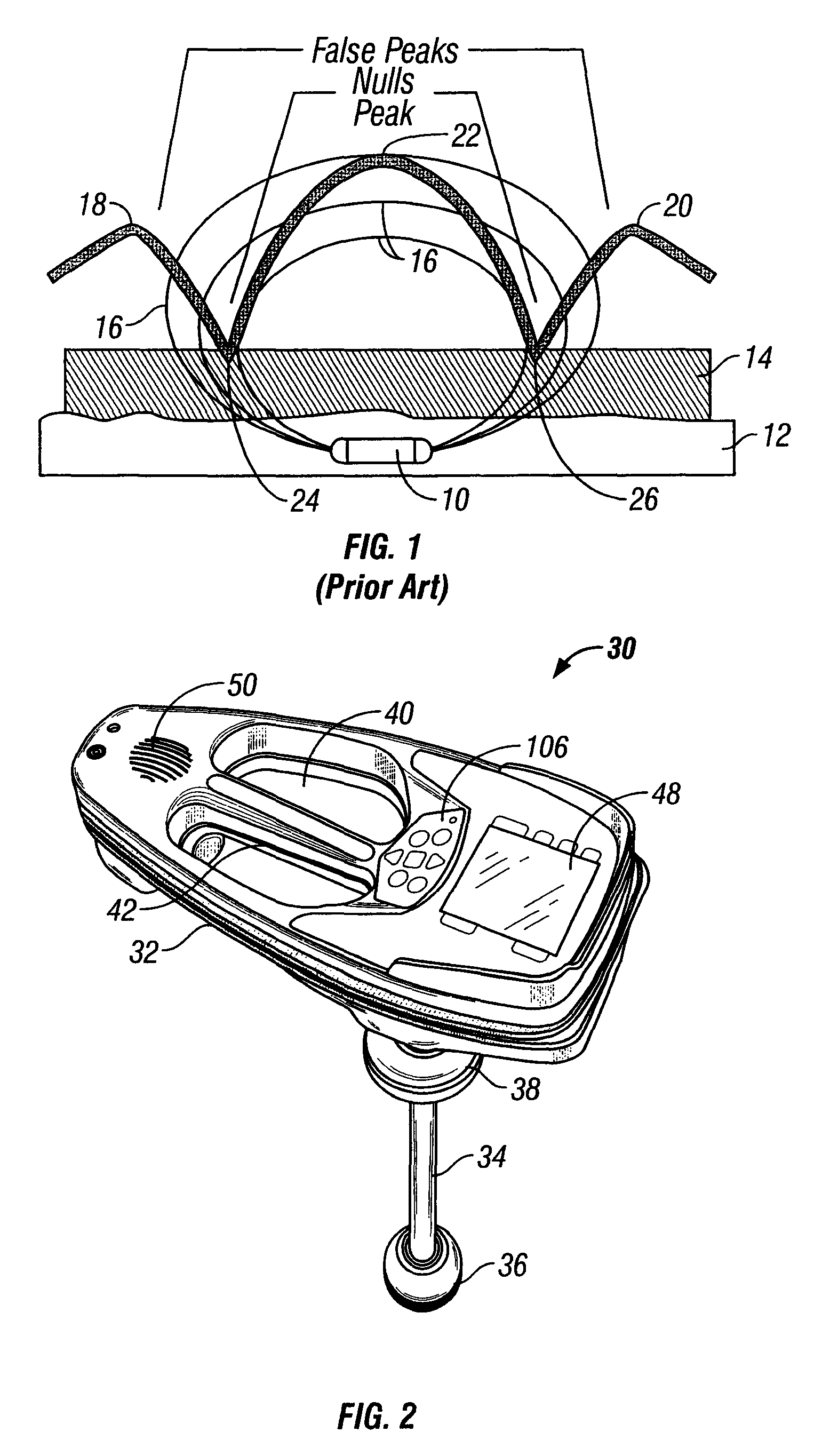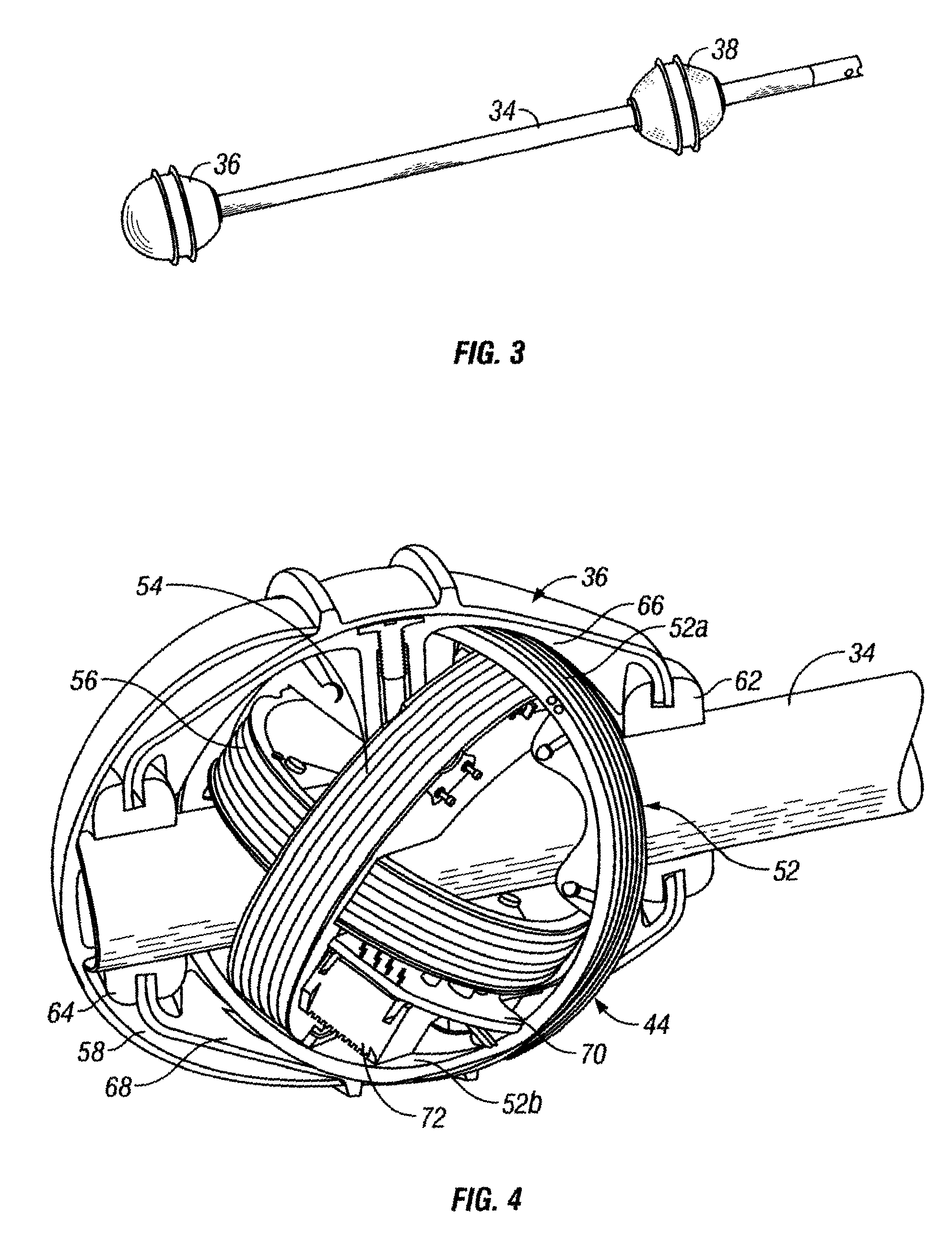Omnidirectional sonde and line locator
a line locator and omnidirectional technology, applied in the field of omnidirectional sonde and line locators, can solve the problems of affecting the comfort and convenience of residents, affecting the use of equipment, so as to achieve the effect of convenient us
- Summary
- Abstract
- Description
- Claims
- Application Information
AI Technical Summary
Benefits of technology
Problems solved by technology
Method used
Image
Examples
Embodiment Construction
[0030]Referring to FIG. 2, a preferred embodiment of the present invention is illustrated in the form of a battery powered, omnidirectional, manually portable system 30 that is capable of locating a buried object by sensing an electromagnetic signal emitted by the buried object. The system 30 includes a housing 32 and an elongate member 34 (FIG. 3) that supports spaced apart lower and upper sensor balls 36 and 38, respectively, and connects them to the housing 32. The housing 32 (FIG. 2) is made of openable rigid plastic shells having a large central aperture 40 spanned by a handle portion 42.
[0031]Circuit means illustrated in FIG. 6 are mounted partly in the housing 32 and partly in the sensor balls 36 and 38 for sensing an electromagnetic signal in a frequency range of approximately 50 Hz to 500 kHz emitted from a buried object and determining a location and depth of the buried object by measuring signal strength and field angles in three dimensions. This is accomplished utilizing...
PUM
 Login to View More
Login to View More Abstract
Description
Claims
Application Information
 Login to View More
Login to View More - R&D
- Intellectual Property
- Life Sciences
- Materials
- Tech Scout
- Unparalleled Data Quality
- Higher Quality Content
- 60% Fewer Hallucinations
Browse by: Latest US Patents, China's latest patents, Technical Efficacy Thesaurus, Application Domain, Technology Topic, Popular Technical Reports.
© 2025 PatSnap. All rights reserved.Legal|Privacy policy|Modern Slavery Act Transparency Statement|Sitemap|About US| Contact US: help@patsnap.com



